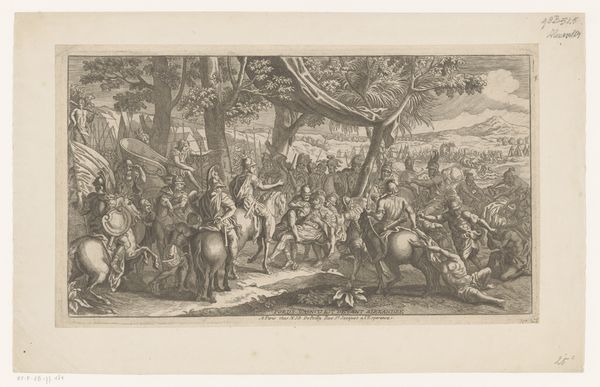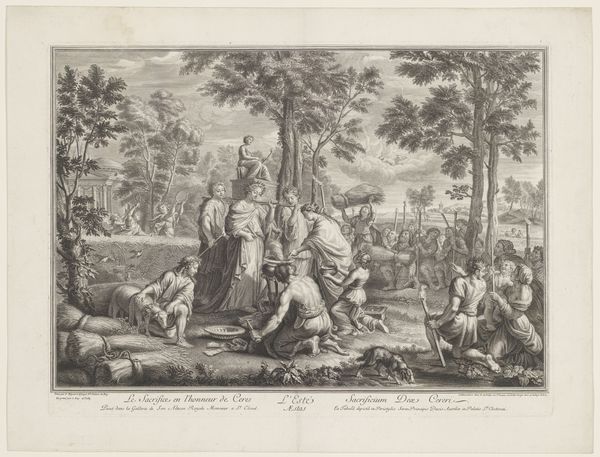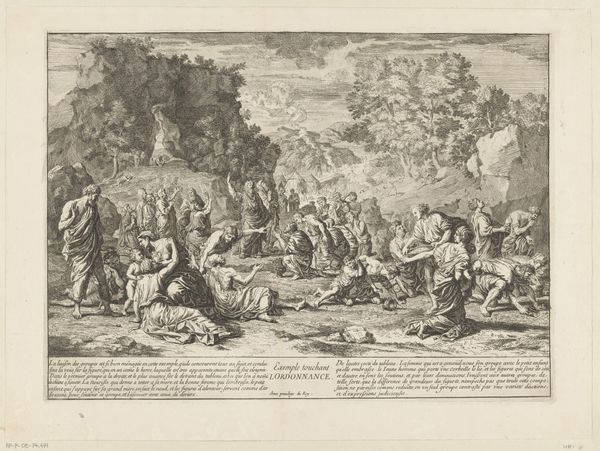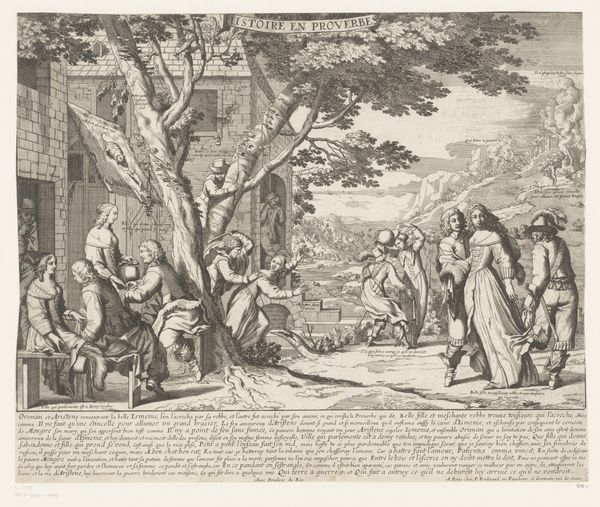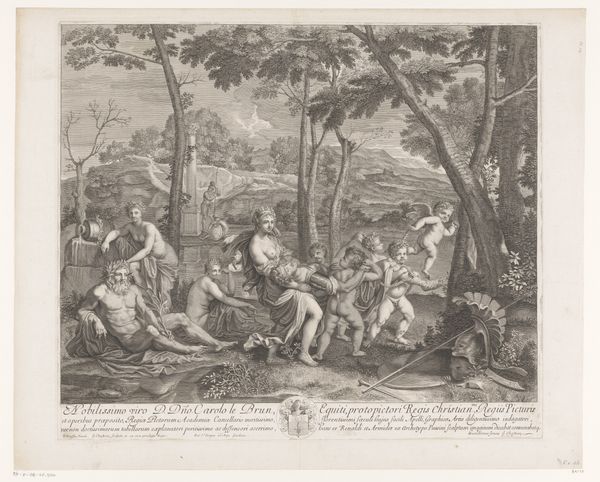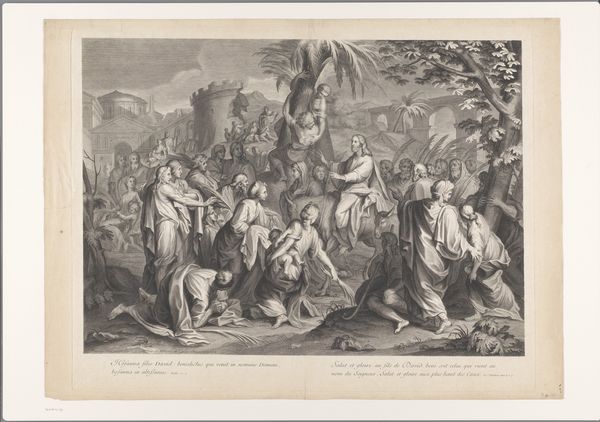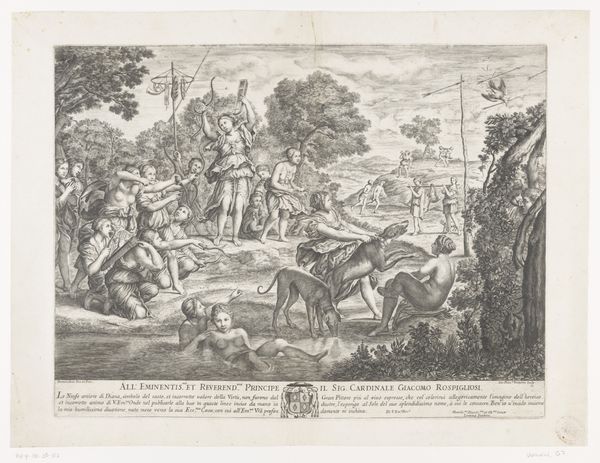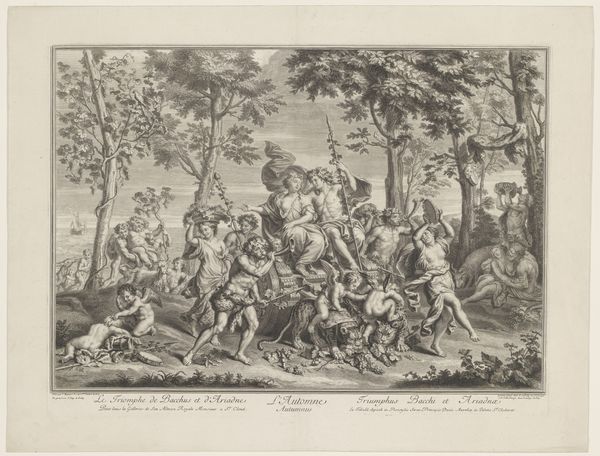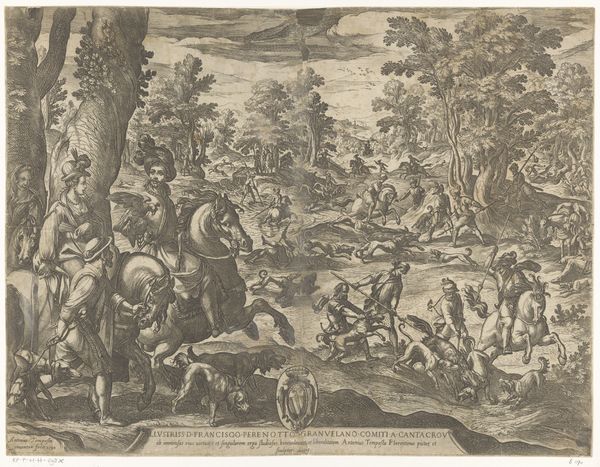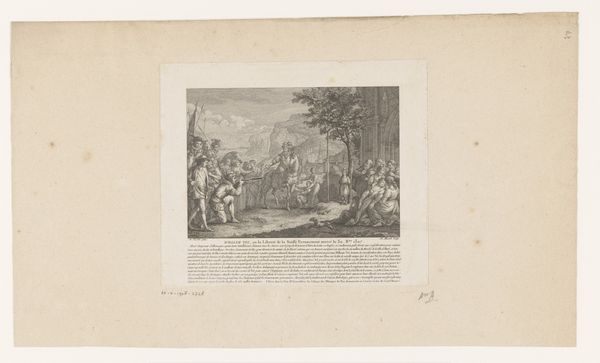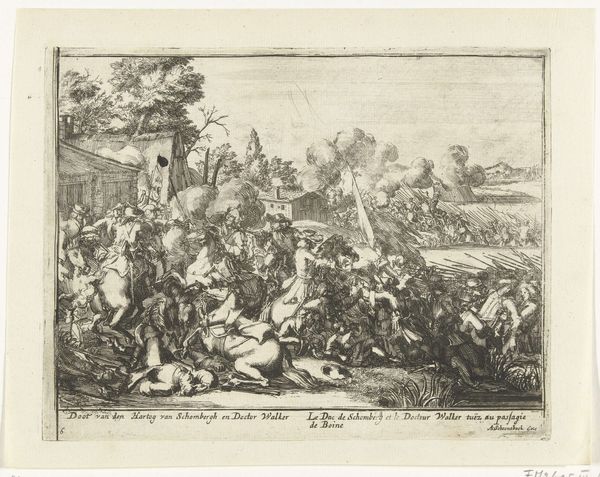
engraving
#
baroque
#
old engraving style
#
landscape
#
history-painting
#
engraving
Dimensions: height 209 mm, width 420 mm
Copyright: Rijks Museum: Open Domain
Curator: This engraving by A. Bormans, likely created between 1746 and 1753, depicts "Verslagen koning Porus voor Alexander de Grote"—"Defeated King Porus before Alexander the Great." What are your initial impressions? Editor: The eye struggles to settle. The sheer volume of figures in a predominantly mid-tone gray overwhelms any focal point. The perspective seems compressed, rendering the landscape strangely shallow despite the purported scale of the historical event. Curator: Indeed. The engraving captures a key moment following the Battle of the Hydaspes River, around 326 BC. Porus, an Indian king known for his bravery, faced Alexander in a grueling battle. This image then represents not just a military defeat, but the subsequent encounter where Alexander, impressed by Porus’s valor, reinstated him as a ruler. Think of what it says about perceived moral ideals even during times of brutal imperialism. Editor: Interesting… looking again, it's easier to decode: clusters of struggling warriors contrasted against a slightly brighter central grouping focused on Porus brought before Alexander. The bodies splayed on the ground and broken weaponry contribute a kind of visual chaos. In terms of the composition, do you read a certain Baroque exuberance here? Curator: Undoubtedly! Baroque art often utilizes dynamic compositions and theatrical displays, something this engraving channels. There's a romanticism, perhaps, as Alexander acknowledges Porus's worth—an image that resonates through centuries of European interpretation of classical heroism. It presents a kind of ideal reconciliation, suggesting something meaningful about power and respect beyond mere conquest. But notice how carefully Alexander is staged on horseback, an unmistakable indication of his command over the situation and his forces. Editor: A perfect example of the victor playing at humility without ceding any actual power. Thanks to its medium, this engraving gives us a reproduction of what may be only our assumptions of the battle. And the way we translate this visual memory into our own values seems infinitely reproducible, too. Curator: Absolutely, and as an accessible medium, engravings like this would have played a significant role in shaping popular understanding of historical and legendary figures. Its availability granted it far more cultural transmission and persistence. Editor: Thank you; after closer consideration, this crowded composition does create its own captivating kind of meaning. Curator: Indeed. It is a complex visual document.
Comments
No comments
Be the first to comment and join the conversation on the ultimate creative platform.
